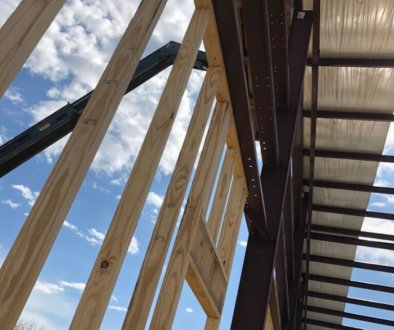5 Times When You Need Air Balancing
Air balancing consists of adjusting the airflow of an HVAC system and each of its air vents according to the ventilation requirements of each space served. Some of the objectives of balancing are: to ensure the comfort of the occupants by standardizing the temperature across the service area, to ensure the evacuation of contaminants, to ensure the movement of air through different departments.
Air balancing of a ventilation system is typically carried out:
- after the initial installation of a ventilation system
- after any modification of the space served by the ventilation system, such as moving walls, change in the use of the space, change in the population of the space
- after any modification of the ventilation system itself
- when reports of discomfort increase
- when it has been more than a few years since the last balance
 The 5 Benefits Of Air Balancing
The 5 Benefits Of Air Balancing
Adjustment of fresh air
Fresh air is the amount of outside air admitted by the ventilation system. During breathing, oxygen is replaced by CO2, and a high concentration of CO2 can cause headaches, loss of concentration, dizziness, and respiratory problems. It is therefore vital that the amount of fresh air be checked and adjusted regularly to ensure a constant intake of oxygen into the building.
Ventilation system performance statement
The performance report consists of taking the complete reading of the ventilation unit; the motor and fan data, the total fan air flow, the flow at each of its air vents, and the operating pressures of the system. The performance report allows the manager to have a complete analysis of the building and detect issues before they arise.
Incoming and Outgoing Balance Sheet
The input and output balance consist of measuring each fan in the facility that enters the outside air or that vents outside to determine the positive or negative balance of a building. Following this assessment, recommendations are made in order to maintain an acceptable pressure in the building.
Air duct pressurization test
The pressurization test is mainly performed during the installation of the ventilation network. This type of analysis ensures that ducting fabrication and installation meets the requirements for leakage throughout the HVAC network.
Change Your Air Filter Regularly
An air conditioner needs the proper airflow across evaporator (indoor coil) and the condenser (outside coil) to operate properly. This article will talk about the air filter that protects the evaporator and why it should be checked after every maintenance job.
If the air flow is restricted, the efficiency of the air conditioning unit as a whole will be lowered causing increased electric bills each month the restriction exists. The unit will run longer and harder than it was designed to. Causing a decreased life of the unit’s components. Each individual part could be affected by this simple oversight of the owner.
If the restriction becomes too bad then the refrigerant freezes up and will start to form a layer of ice in the evaporator coil. The longer it runs the thicker the ice becomes until no air can flow through the coil at all. Eventually, the compressor will fail from this and cause many more problems into the complete system. If the system turns off then the ice will start to melt on the inside unit and you probably have seen this common problem when you see a unit dripping water. The system may continue to turn on and off (short cycle) until complete failure of the unit or you contact an HVAC contractor to fix this problem.
What can you do to avoid this situation?
You need to make sure that your filter is changed regularly. This is a relatively an easy thing to do when done on time and before problems escalate. The owner should set-up a reminder and follow the HVAC technician recommended frequency.
Even with a new filter each month some dirt will get pass the filter and cause another problem, a dirty blower compartment. A seasonal check-up by your HVAC contractor cannot only check each part but also clean each unit. If you do not have the blower compartment cleaned dirt can build up on the blower wheel fins. A dirty blower fan wheels and a dirty furnace filter will definitely cause your system to freeze up and then drip water. Causing damage to your facility and health overall.




